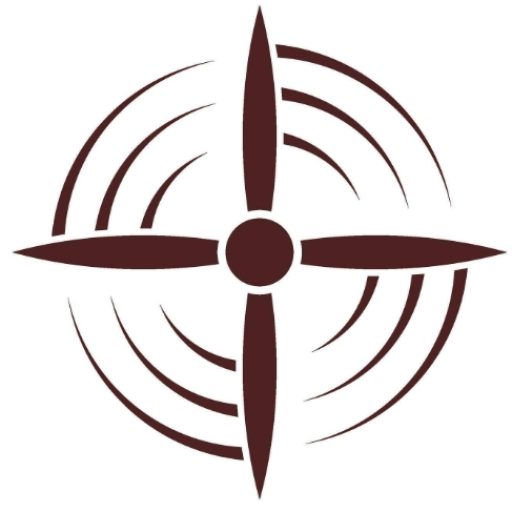DJI agricultural drones, such as the Agras T40, T30, T20P, T50, and MG-1P, are widely used in precision farming for crop spraying, seeding, and mapping. While these drones are built for durability, certain components wear out faster due to frequent use, environmental conditions, and operational stress.
For drone operators and agricultural service providers, knowing which parts are high-wear items helps in planning maintenance and stocking essential spares. This guide covers the most frequently replaced DJI agricultural drone parts, their expected lifespan, and tips for prolonging their usability.
1. Propellers (Rotors)
Replacement Frequency: High
Why They Wear Out: Propellers endure constant stress from motor torque, wind resistance, and minor collisions with crops or debris. Bent or chipped blades reduce flight stability and spraying efficiency.
Recommended Action:
- Inspect before every flight for cracks or deformities.
- Replace in pairs to maintain balance.
- Keep spare sets (DJI Agras models use specific propellers, e.g., T40 has quick-release blades).
2. Nozzles (Spray Tips)
Replacement Frequency: Very High
Why They Wear Out: Nozzles are prone to clogging from chemical residues, abrasive particles in pesticides, and corrosion from fertilizers. Worn nozzles disrupt spray patterns, leading to uneven coverage.
Recommended Action:
- Clean after each use with distilled water or nozzle cleaning solutions.
- Replace every 50-100 flight hours or sooner if clogging persists.
- Keep multiple nozzle types (e.g., flat fan, hollow cone) for different chemical viscosities.
3. Batteries (Intelligent Flight Batteries)
Replacement Frequency: Moderate (300-500 cycles)
Why They Degrade: Lithium-ion batteries lose capacity over time due to charge cycles, high temperatures, and deep discharges. A failing battery reduces flight time and may cause mid-flight shutdowns.
Recommended Action:
- Store at 30-50% charge if unused for long periods.
- Avoid extreme heat or cold exposure.
- Monitor battery health via the DJI Agras app and replace when capacity drops below 70%.
4. Spray Pump & Filters
Replacement Frequency: Moderate
Why They Wear Out: The pump diaphragm and valves degrade from chemical exposure, while filters trap debris and sediment, eventually clogging.
Recommended Action:
- Flush the system with clean water after each use.
- Replace filters every 100-150 flight hours.
- Check for leaks or reduced spray pressure, indicating pump wear.
5. Landing Gear & Skids
Replacement Frequency: Moderate
Why They Wear Out: Rough landings, uneven terrain, and heavy payloads stress the landing gear. Cracks or bends can destabilize takeoff/landing.
Recommended Action:
- Reinforce with aftermarket skid plates if operating in rocky areas.
- Inspect for stress fractures after hard landings.
6. Motors & ESC (Electronic Speed Controllers)
Replacement Frequency: Low (but costly if failed)
Why They Wear Out: Dust, moisture, and overheating can damage motor bearings or ESC circuits. Sudden motor failure may lead to crashes.
Recommended Action:
- Clean motors after flights in dusty conditions.
- Listen for unusual noises (grinding = bearing wear).
- Keep spare ESCs for quick swaps.
7. Rubber Seals & O-Rings
Replacement Frequency: Moderate
Why They Wear Out: Constant exposure to chemicals and UV radiation causes rubber components to harden, crack, or leak.
Recommended Action:
- Replace O-rings annually or if leaks appear.
- Use chemical-resistant grease to prolong seal life.
8. GPS/RTK Antennas
Replacement Frequency: Low (unless physically damaged)
Why They Wear Out: Accidental impacts or water ingress can disrupt signal accuracy, affecting autonomous flight.
Recommended Action:
- Shield the antenna from collisions.
- Test GPS signal strength before missions.
9. Spray Arms & Hoses
Replacement Frequency: Moderate
Why They Wear Out: Chemical corrosion and physical snags on crops can crack hoses or bend spray arms.
Recommended Action:
- Inspect for leaks or kinks regularly.
- Use reinforced hoses for abrasive chemicals.
10. Remote Controller Sticks & Buttons
Replacement Frequency: Low (but possible with heavy use)
Why They Wear Out: Frequent button presses and joystick movements cause mechanical wear over time.
Recommended Action:
- Use protective covers to minimize dust exposure.
- Replace sticks if they become unresponsive.
Conclusion: Stocking Spares for Minimal Downtime
For agricultural drone service providers, keeping propellers, nozzles, batteries, and filters in stock is essential. Regular maintenance extends part lifespan, but having backups ensures uninterrupted operations during peak farming seasons.
Pro Tip: DJI offers official maintenance kits for Agras drones, bundling common wear parts. Investing in these can save time and reduce long-term costs.
By proactively replacing these high-wear components, farmers and drone operators can maximize uptime, improve spraying accuracy, and protect their investment in DJI’s advanced agri-drones.
SEO Keywords:
DJI Agras spare parts, agricultural drone accessories, drone nozzle replacement, T40 propeller lifespan, Agras battery maintenance, spray pump repair, drone motor failure, best drone spare parts, DJI farming drone upkeep.
This guide helps operators minimize downtime and optimize drone performance—critical for profitable precision agriculture.
